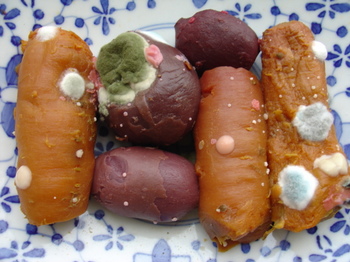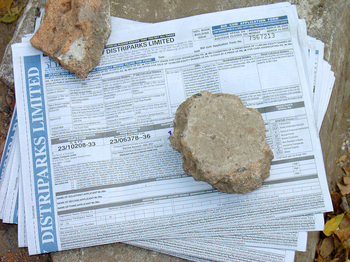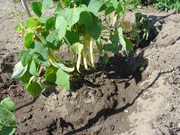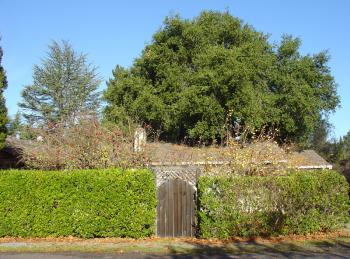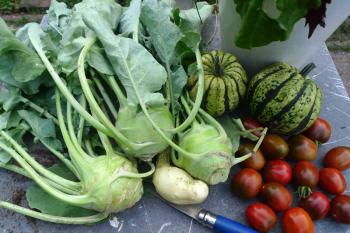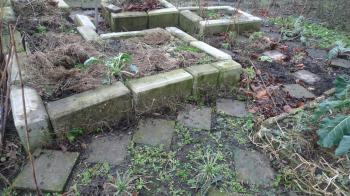Working your land
with a heavy hand
February 9, 2010
some things never change…
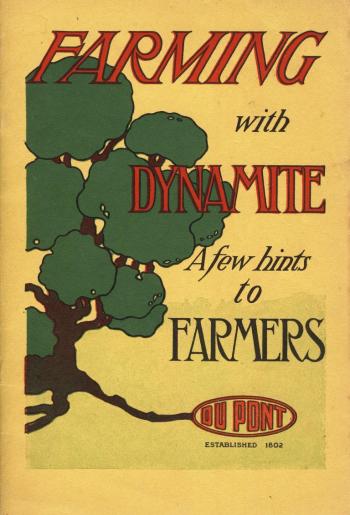
Image used entirely without permission.
Thank you Fourmilab.
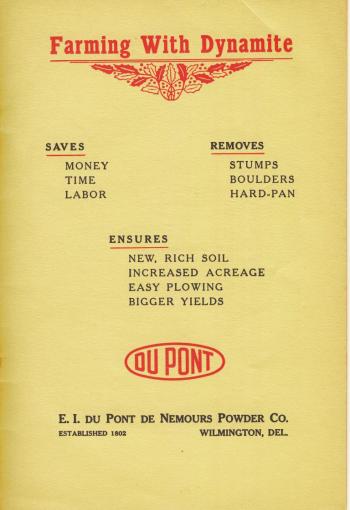
Image used entirely without permission.
Thank you Fourmilab.
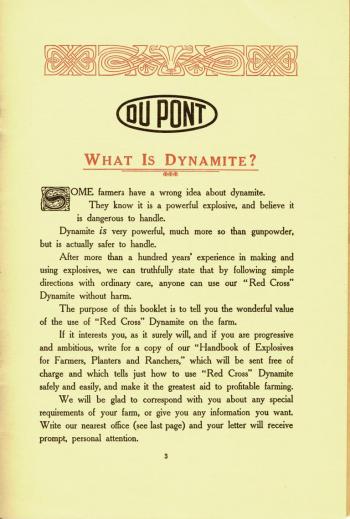
Image used entirely without permission.
Thank you Fourmilab.
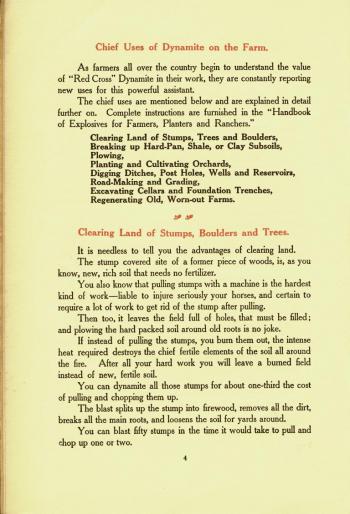
Image used entirely without permission.
Thank you Fourmilab.
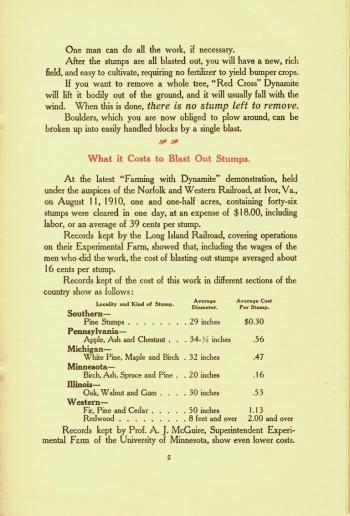
Image used entirely without permission.
Thank you Fourmilab.
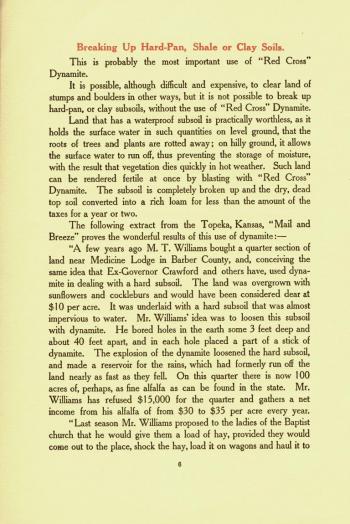
Image used entirely without permission.
Thank you Fourmilab.
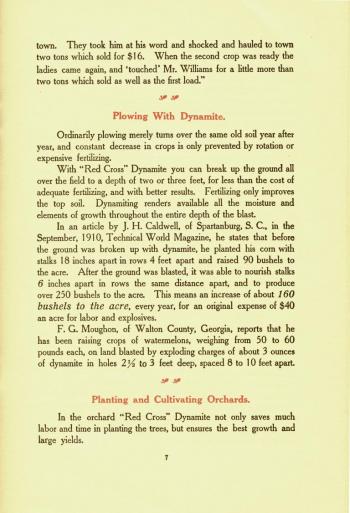
Image used entirely without permission.
Thank you Fourmilab.
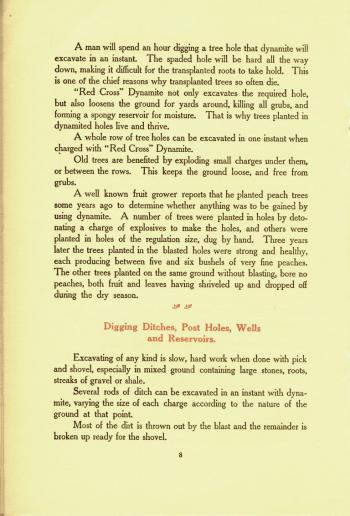
Image used entirely without permission.
Thank you Fourmilab.
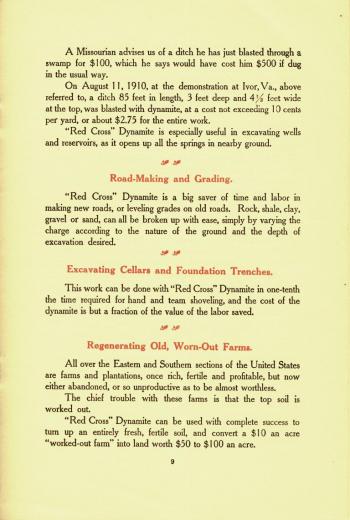
Image used entirely without permission.
Thank you Fourmilab.
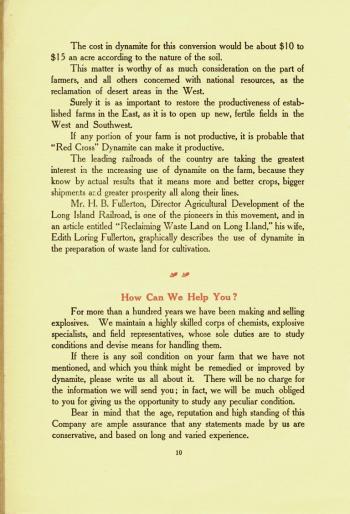
Image used entirely without permission.
Thank you Fourmilab.
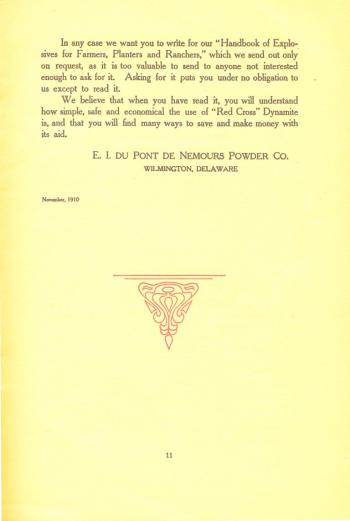
Image used entirely without permission.
Thank you Fourmilab.
Dang I can’t wait for my permaculture class to start up again. Just two more nights.
debra at 22:24 | Comments (2) | post to del.icio.us
Slim Pickins winter salad
Heq yeah, we’re hardy!
January 21, 2010
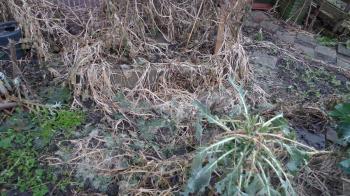
But not completely; like gardener, like garden.
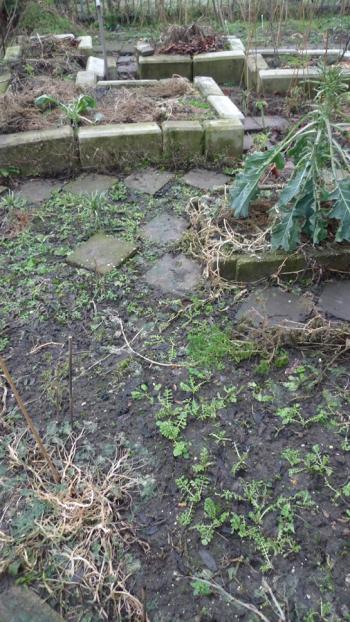
January demonstration of rocket hardiness.
While I was back in Northern California complaining that no one heats their homes, here in the Polar Circle the canals had frozen thick. We’d had night frost since the end of November, and until last Sunday this garden was covered with snow, some of it a month old. But a surprising amount of edible permaculture was revealed in the thaw! What better way to rejoice than with a Winter Salad Celebration at the Slim Pickins Garden Restaurant, this Sunday.
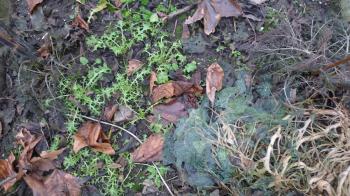
Seasonally fresh, right here, right now.
Rocket, curly leaf parsley, mizuna lettuce, fennel, and if it weren’t for my boundless generosity towards the Bird Community in and around Amsterdam Central Station, there could have been abundant broccoli, cavalo nero, and kale. I’ve made a New Year’s resolution to become more aggressive towards birds since I have discovered that they’re not nearly as community-minded as they make themselves out to be.
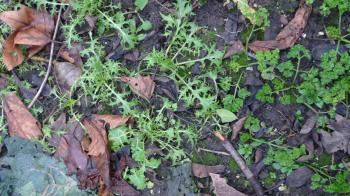
Thrive little greens, that we may celebrate your winter hardiness, shredded into our salad!
The demonstration garden has proven once again that you can grow and harvest leafy greens in the open ground, in the Polar Circle, all year long. Slim Pickins garden restaurant is open for reservations this Sunday. Bring warm blankets, it’s going to be absolutely freezing, if not bitterly cold.
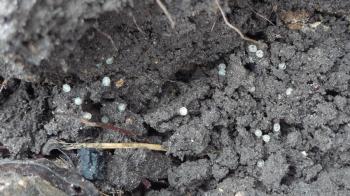
A garden accident involving one of the beds revealed sub-terranean worm eggs. Or slug eggs. If they’re slug eggs, the Bird Community is cordially invited to tuck in. Otherwise, ‘Birds, back the EFF OFF my Worm Community!’
Sunday, January 24th, 2010:
Late-ish lunch menu-fixe for 4 ppl:
- freshly plucked winter salad, dressed in situ with
*meyer lemon and
**olive oil
* - hand plucked and ferally transported from the ancestral home in California
** - hand plucked, pressed, and ferally transported from the permaculture farm of Annelieke vd Sluis in Meló, Portugal
- cockle-warming home made kimchi-kidney bean soup
- meyer lemon water kefir
- something cockle-warming involving vodka
Reserve now, Slim Pickins seats only 4 ppl! Children permitted if they don’t complain (at all) or trample anything.
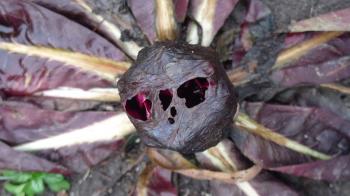
Chef is not above stealing/recovering a partially frozen endive from the neighbours.
Slim Pickins is an outdoor, micro-eatery situated on the edge of a raised bed, in an urban kitchen garden, serving amuses gueules from whatever the tiny garden has to offer, even and especially when that’s not very much. Occasionally open, rain or shine.
debra at 21:28 | Comments (2) | post to del.icio.us
Myco-blitz, fruiting bodies
January 19, 2010
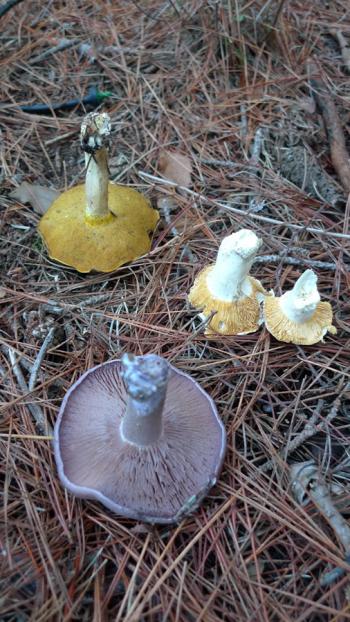
Upended and neglected by one animal forager, arranged and shot for identification by another.
In order to secure from landslide the steep incline that cups our house, my father planted it full of trees whose main job in life is to become really large. Something like 30 years ago, he introduced the deodara, pines, redwoods, and then predicting the gaps that come with arboreal maturity he planted the juniper chinensis; limb-rich, majestic, scented and kinetic. An eco-system from top to bottom, a plant wall, a live filtre of foam green sprays catching drifts of pine needles on heaving articulated branches before falling further, to carpet the man-made forest floor.
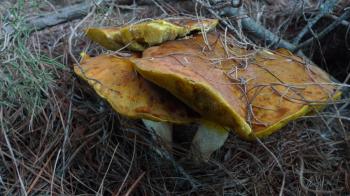
Suillus luteus or brevipes, ‘Sticky Bun’ or ‘Slippery Jack’ Bolete. 5 kilos from our garden!
This swathe of woodland, where animals live and pass through, whose shade and soft ground make it the ideal spot for wood splitting, and where wood in various states of being split gets stacked to dry. There’s an abundant humus layer that comes from moving all that wood around; prunings, rotten bark, saw dust, chips, all landing on the ground and getting covered up by the ceaseless needle fall. This is how the woodland harvest of one household inadvertently developed into an ideal environment for mushrooms.
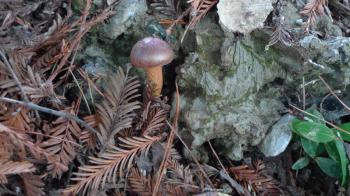
Chroogomphus vinicolor / Pine Spike, under the redwoods, edible but not choice.
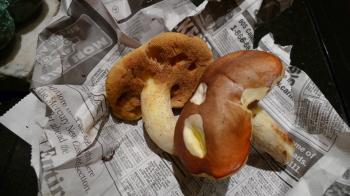
But these two discoveries were choice.
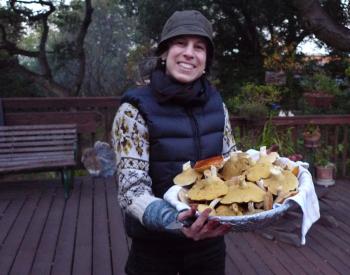
Culiblog author shows off one afternoon’s haul.
During a recent visit to the ancestral home, a two-day myco-blitz revealed more than 20 sorts of fruiting fungus, most remarkably, an easy 5 kilos of Suillus Luteus, or ‘Slippery Jack’ style boletes.
I’d like to give a shout out to the Mycelium Community for giving us a good show right through the cusp of the changing year, for feeding us and the trees that keep up that hill, well into 2010.
Here’s to a long future of collaboration, abundant fruition in 2010, and best wishes for superb soil fertility for all parties involved.
-
The purple mushrooms turned out to be Blewits or Clitocybe nuda.
More information on the Blewits right here. Next year we’re eating them.
True to the description above, in the garden the chroogomphus vinicolor and the suillus luteus were growing ‘gregariously’ (as they say in mushroom talk) right next to each other.
Another form, the chroogomphus ochraceus/Pine Spikes
Lactarius rubrilacteus - We also had around 8 of these growing near the wooden path.
More on the the short-stemmed Slippery Jack or Suillus Brevipes.
About the sub-order boletecae on Mykoweb.
In a mycorrhizal association, the fungus colonizes the host plants’ roots, either intracellularly as in arbuscular mycorrhizal fungi (AMF), or extracellularly as in ectomycorrhizal fungi. They are an important component of soil life and soil chemistry.
Mutualist Dynamics:
Mycorrhizae form a mutualistic relationship with the roots of most plant species (and while only a small proportion of all species has been examined, 95% of these plant families are predominantly mycorrhizal).Sugar-Water/Mineral exchange:
This mutualistic association provides the fungus with relatively constant and direct access to carbohydrates, such as glucose and sucrose supplied by the plant.[4] The carbohydrates are translocated from their source (usually leaves) to root tissue and on to fungal partners. In return, the plant gains the benefits of the mycelium’s higher absorbtive capacity for water and mineral nutrients (due to comparatively large surface area of mycelium:root ratio), thus improving the plant’s mineral absorption capabilities.[5]
Plant roots alone may be incapable of taking up phosphate ions that are demineralized, for example, in soils with a basic pH. The mycelium of the mycorrhizal fungus can, however, access these phosphorus sources, and make them available to the plants they colonize.[6]
Here’s a superb RANT about mushroom foraging and the exaggerated fear of poisoning
Toxic Fungi of Western North America: poisoning guide
2. Eat new edible fungi in small amounts at first.
3. Be cautious offering wild fungi to guests even if you have had no problems. Idiosyncratic GI reactions are common, although typical allergies such as hay fever, asthma and hives are uncommon. There are no reports to date of mushrooms causing allergic (anaphylactic) shock.
4. Remember that many mushrooms cause trouble when eaten raw. These are usually GI upsets. Gyromitrin and some other toxins are destroyed, at least in part, by cooking. The Europeans have found that, on rare occasion, a number of common genera including “edible” amanitas are able to provoke red blood cell destruction when eaten raw or partly cooked. This should be true of all western hemisphere ?blushers? and of species referred to by the European name Amanita franchetii (Boud.) Fayod.
5. Don’t be gluttonous. Small amounts of some toxins may be tolerated.
6. If a canned mushroom has been ingested, call attention of physicians to botulism if there are pupil dilation, muscular weakness or central nervous system symptoms. There is an anti-serum available, which may keep victims off a respirator.
7. Heed the advice of Elias Fries in his Observationes mycologicae, “Illustrations appeal to idlers who do not have energy enough to study
descriptions”. Using a poor photograph of Agaricus augustus, but not reading the description below the colored plate, two California victims
misidentified what was actually Amanita phalloides. Both required liver transplants.A hilarious text: Fungal diseases that must be overcome to have a traditional Thanksgiving dinner
debra at 0:44 | Comments (4) | post to del.icio.us

